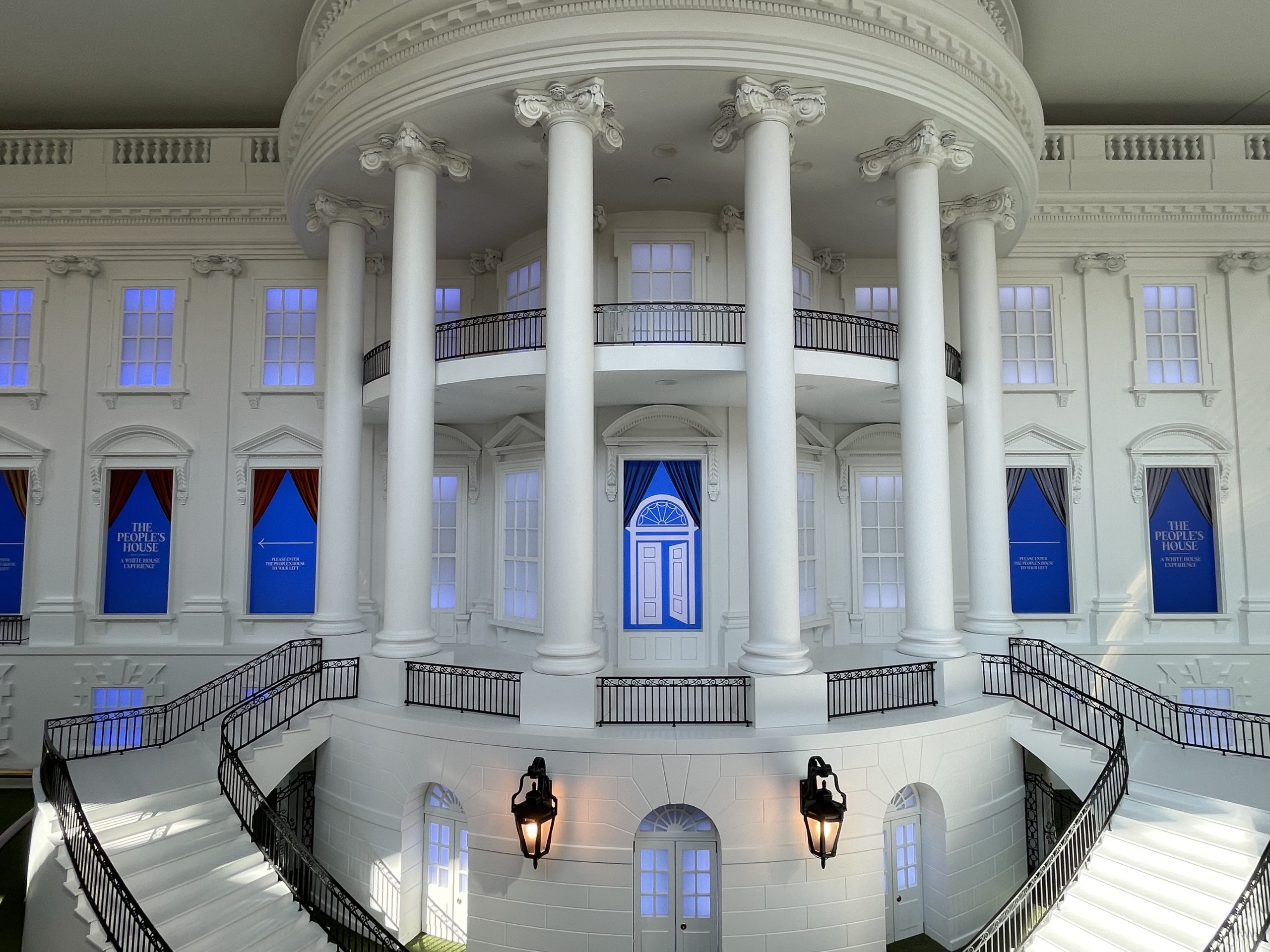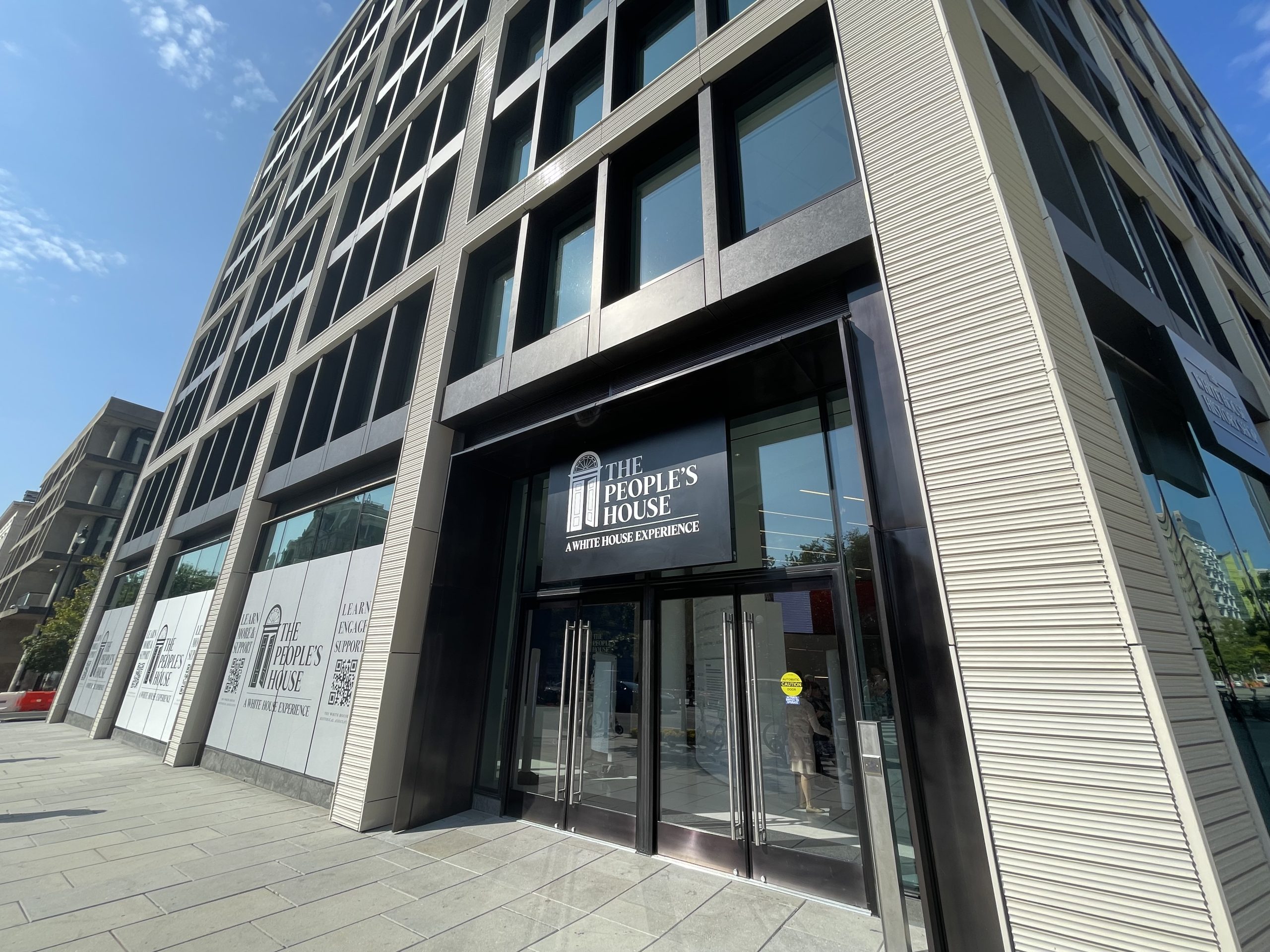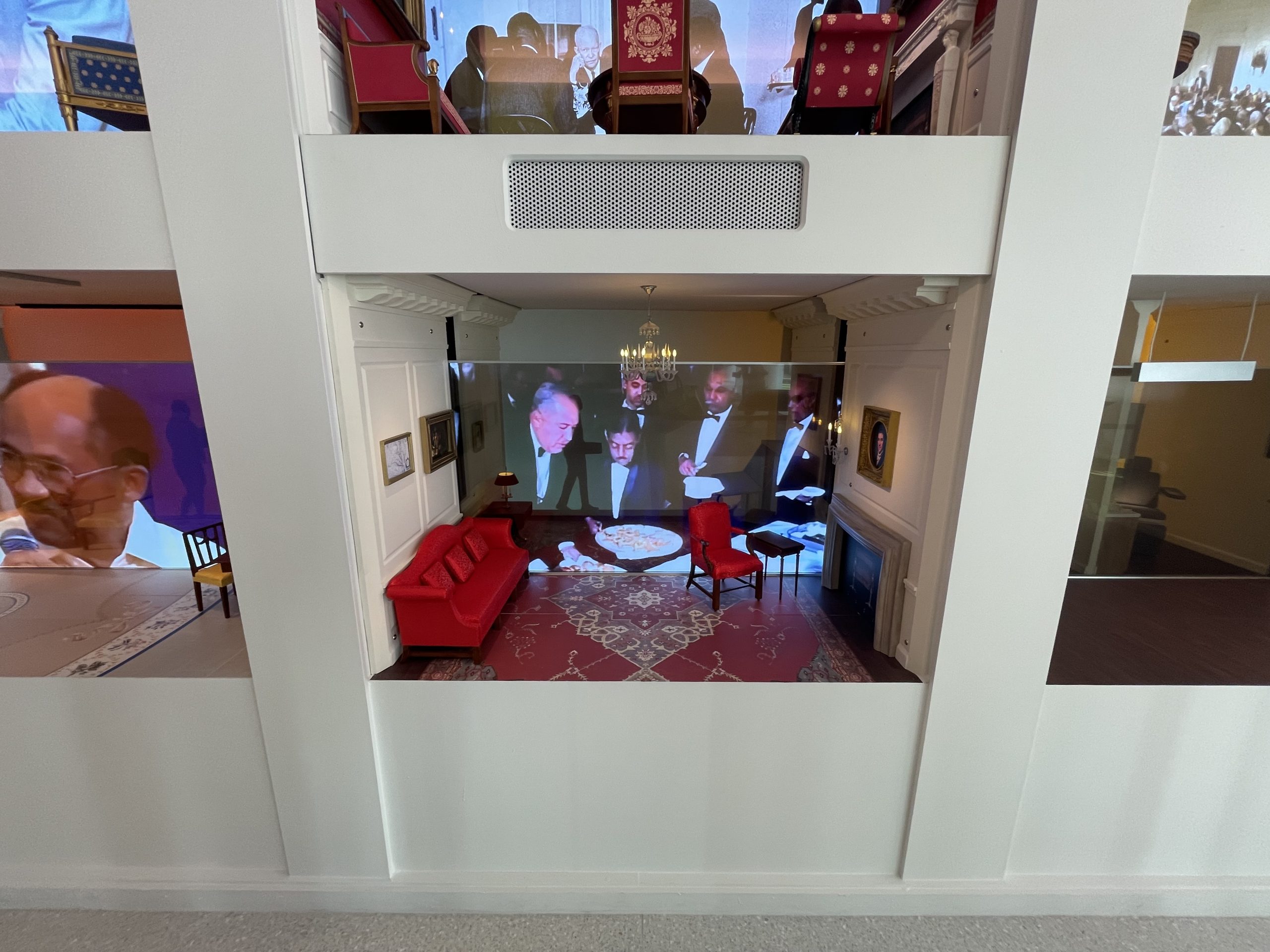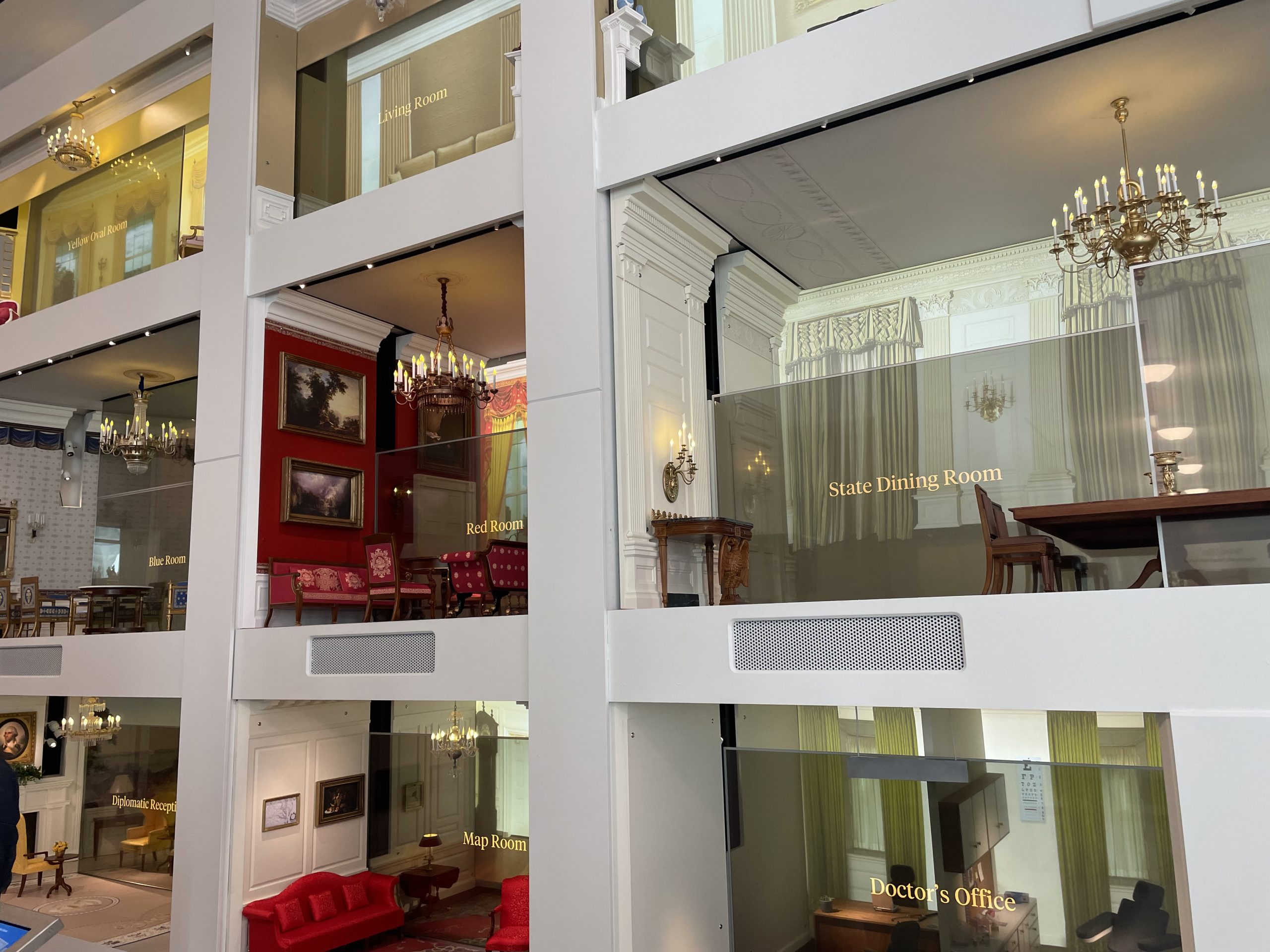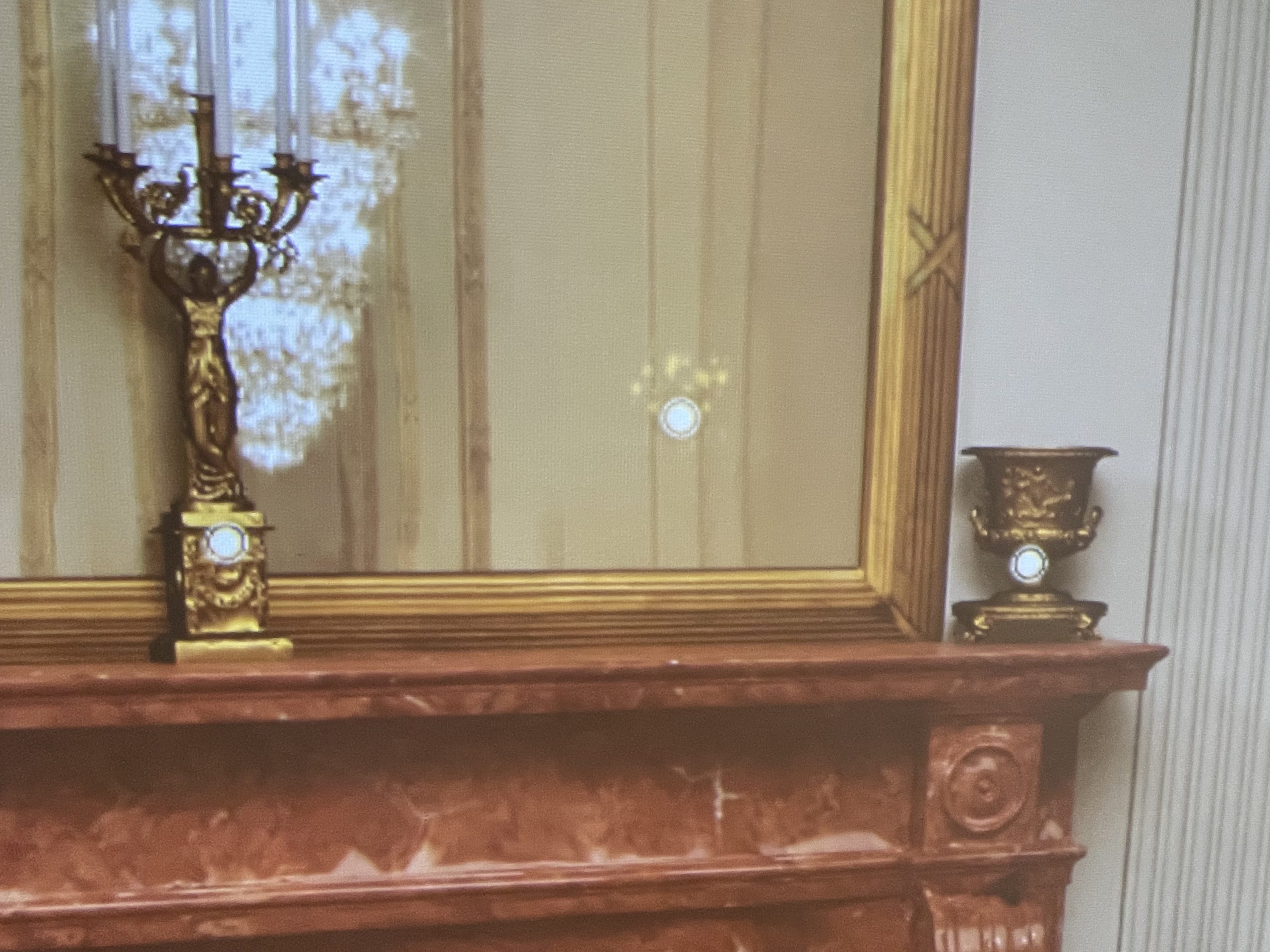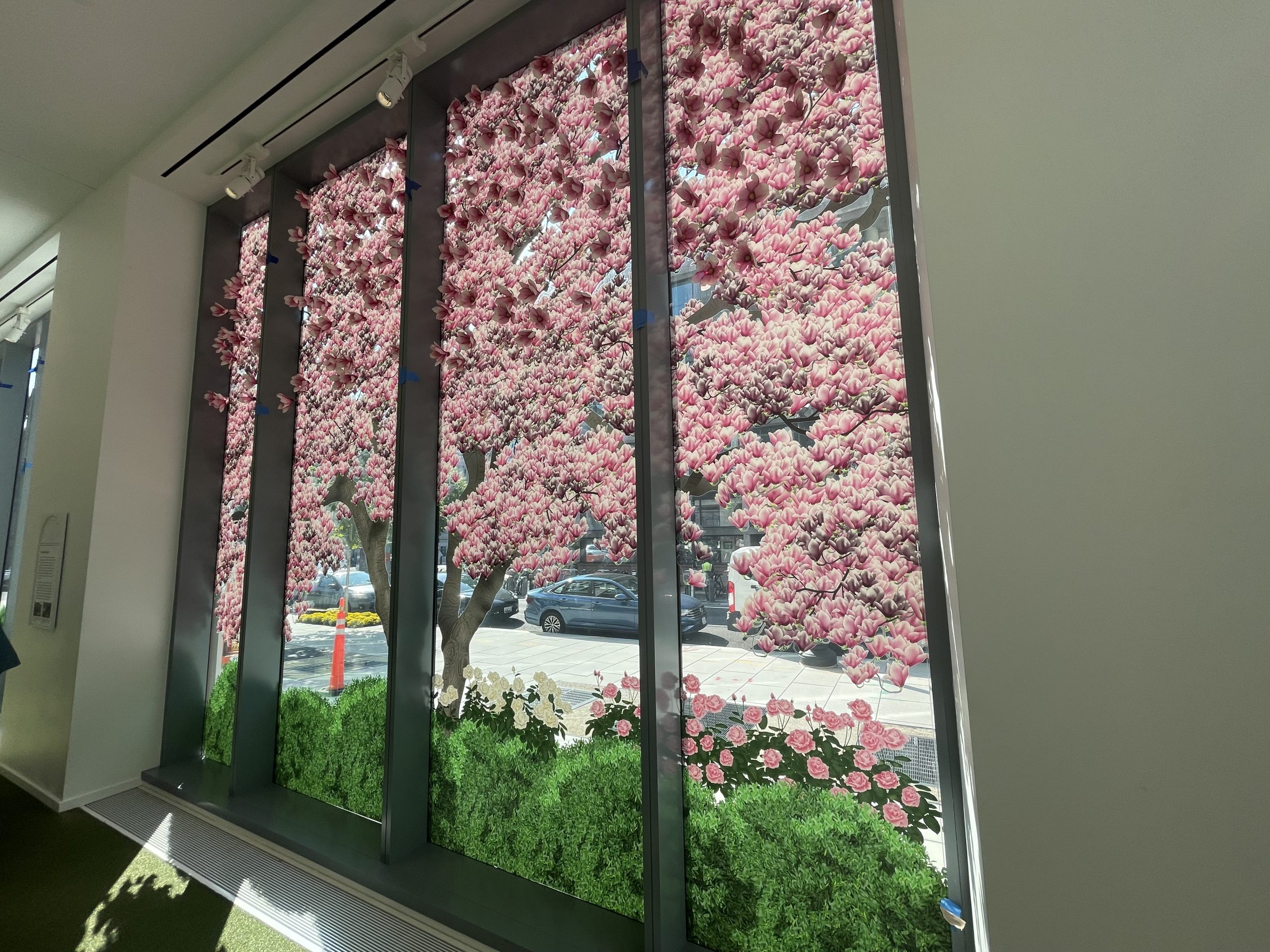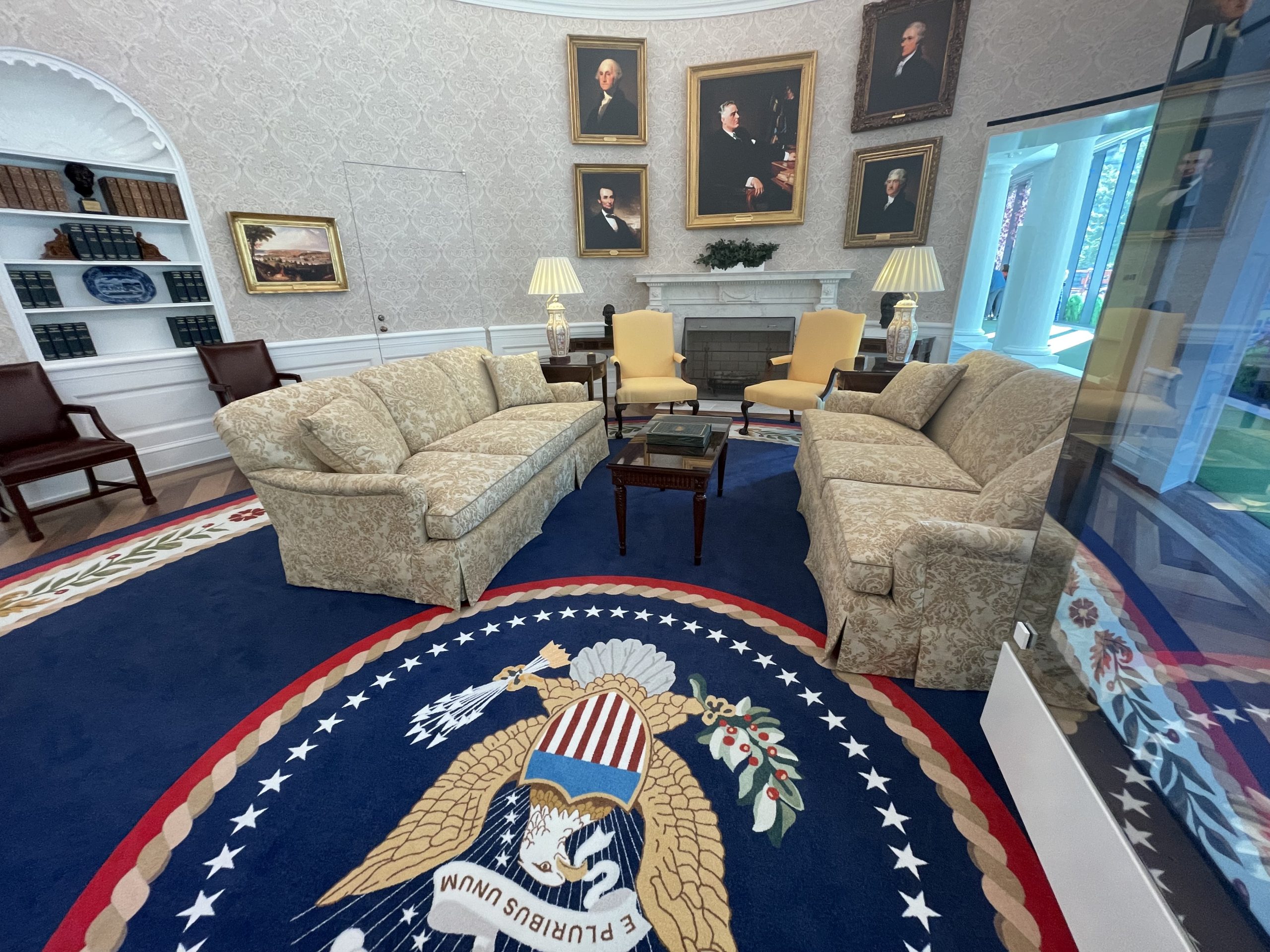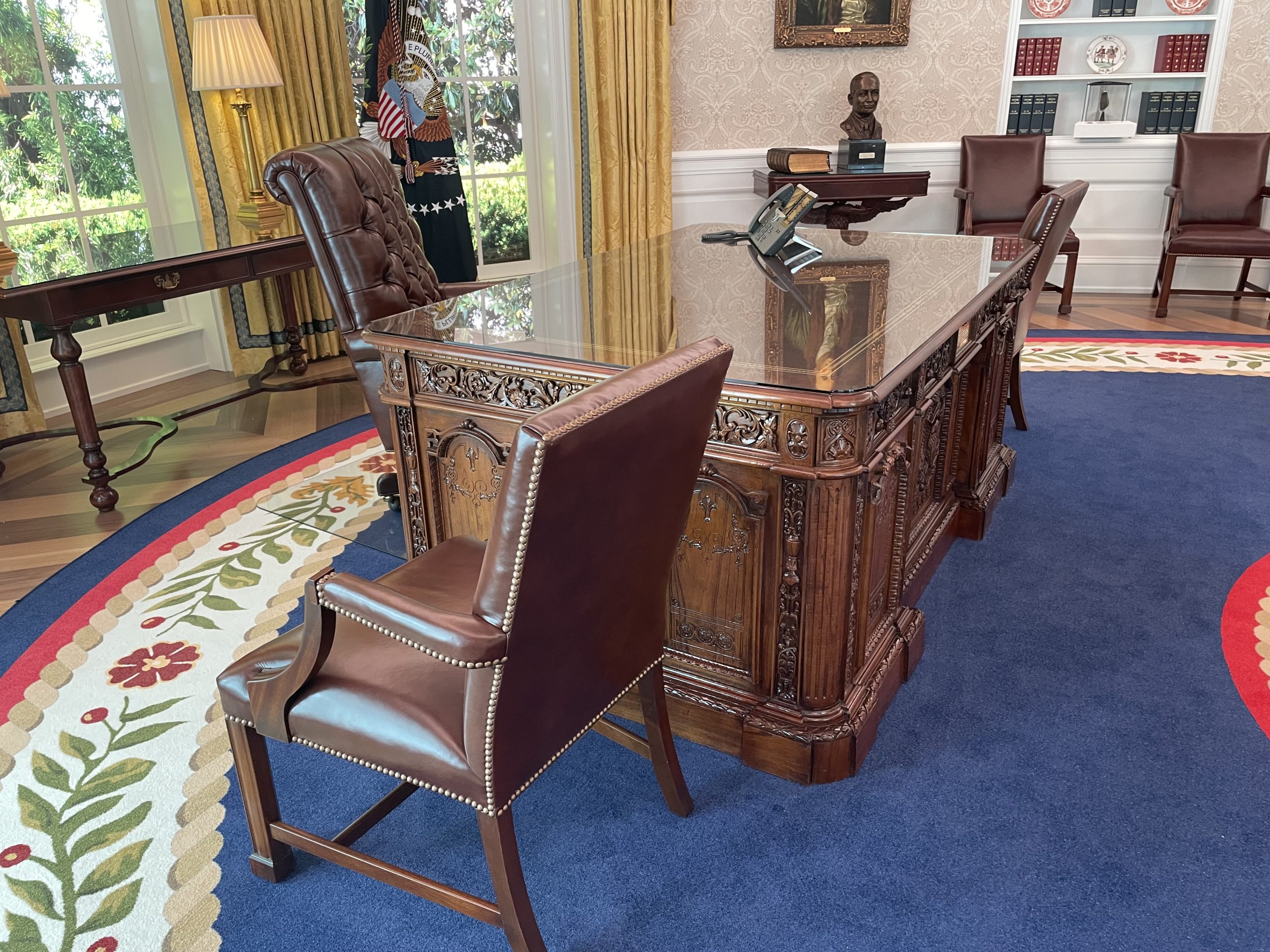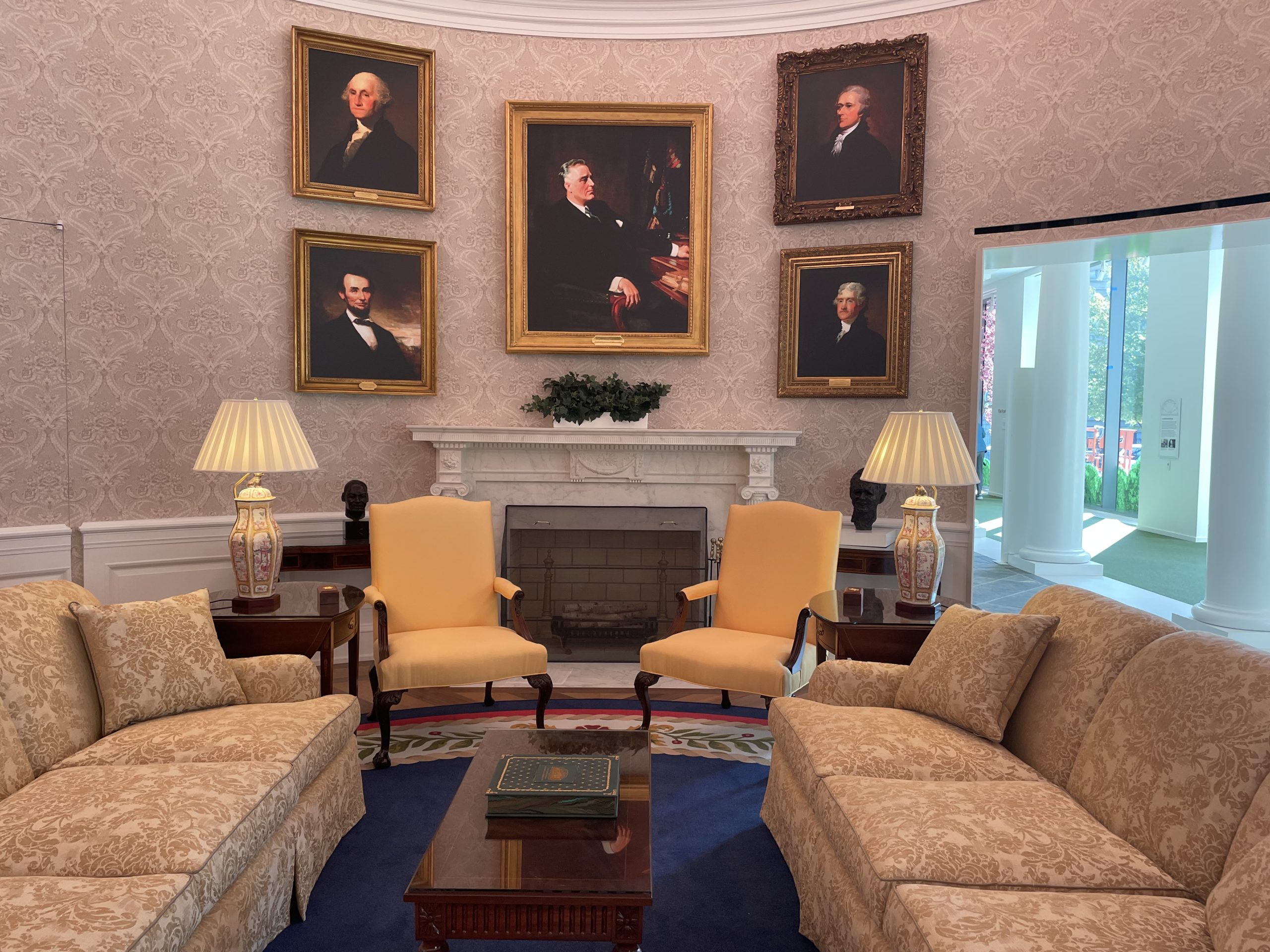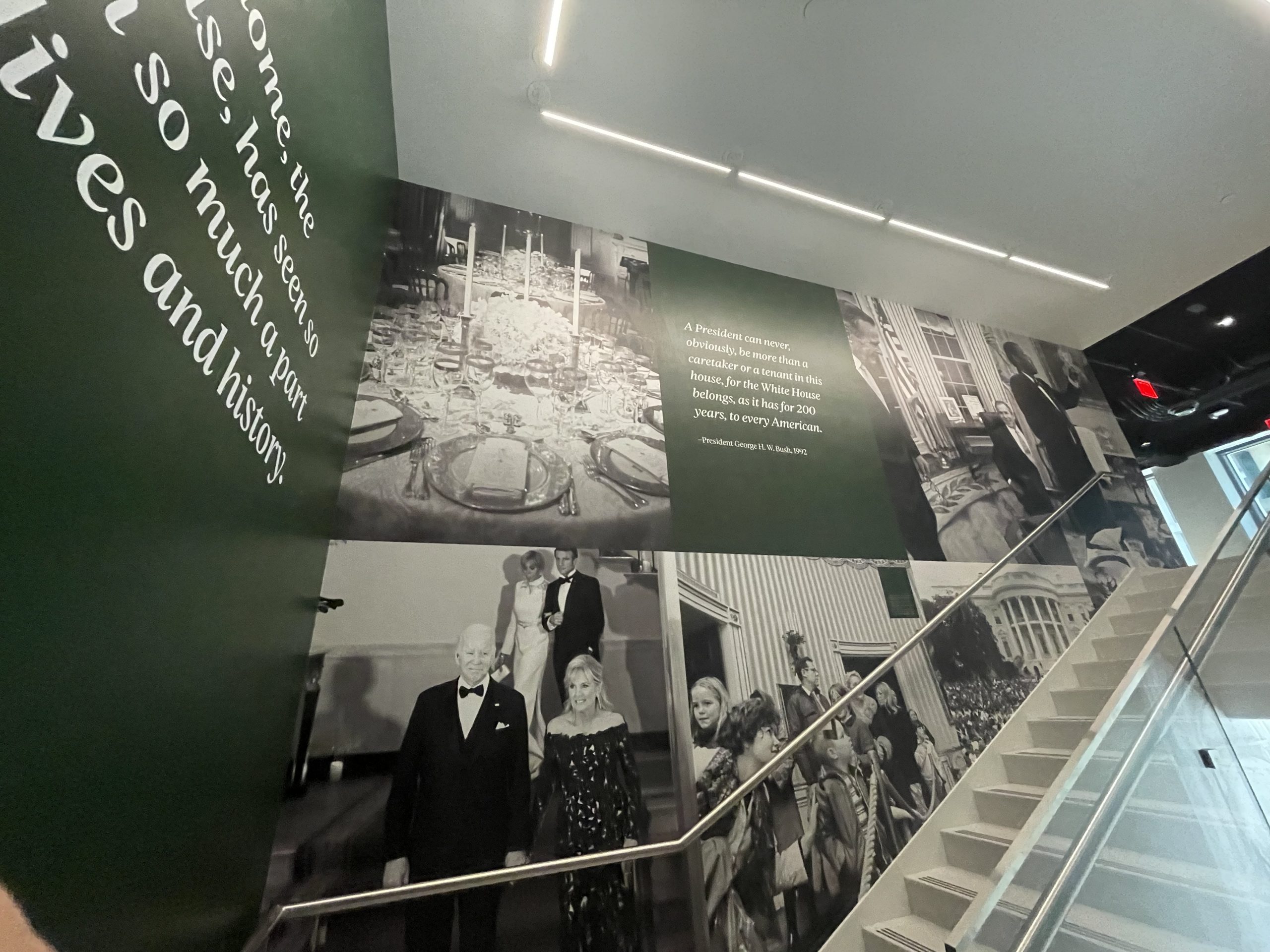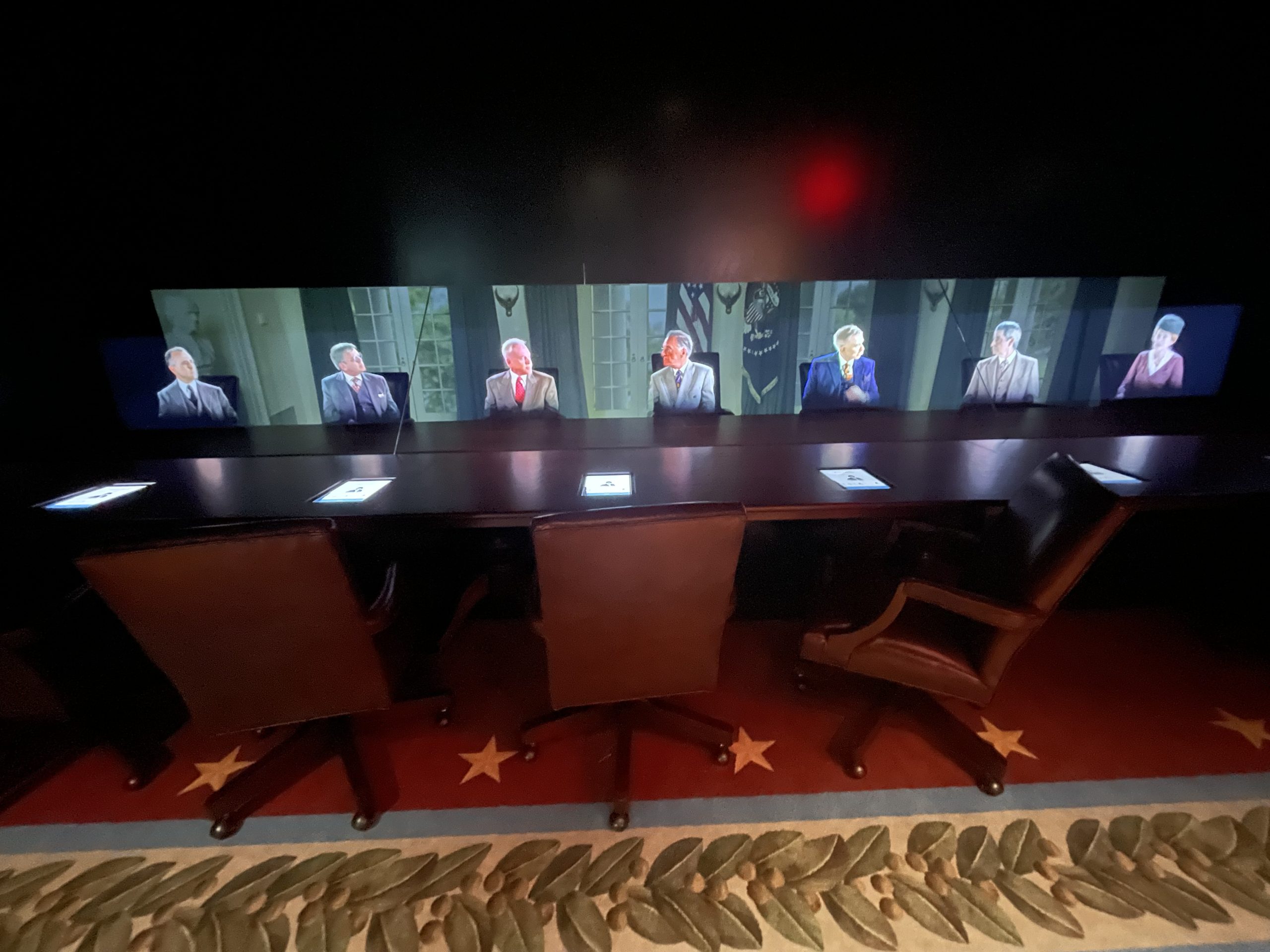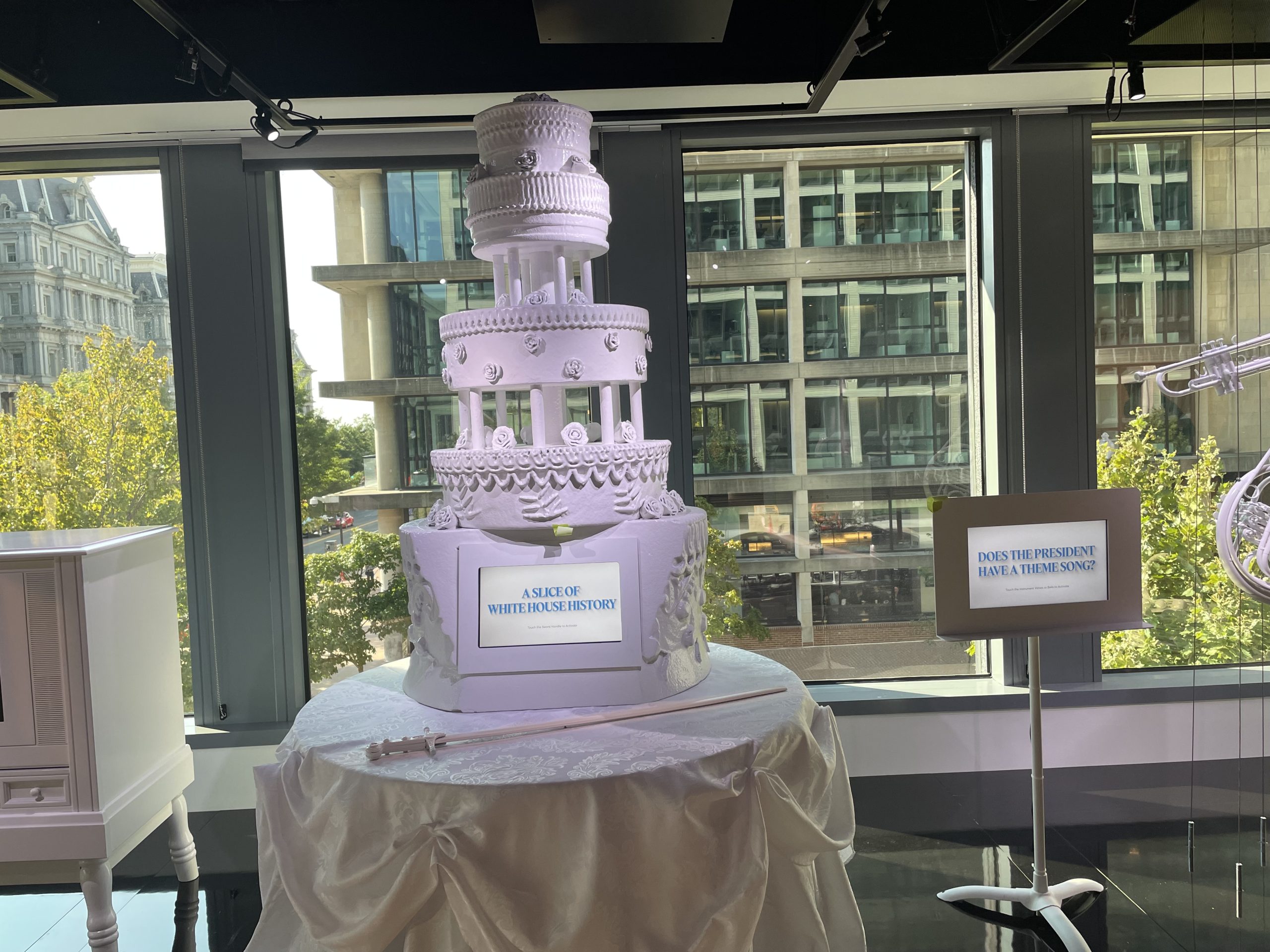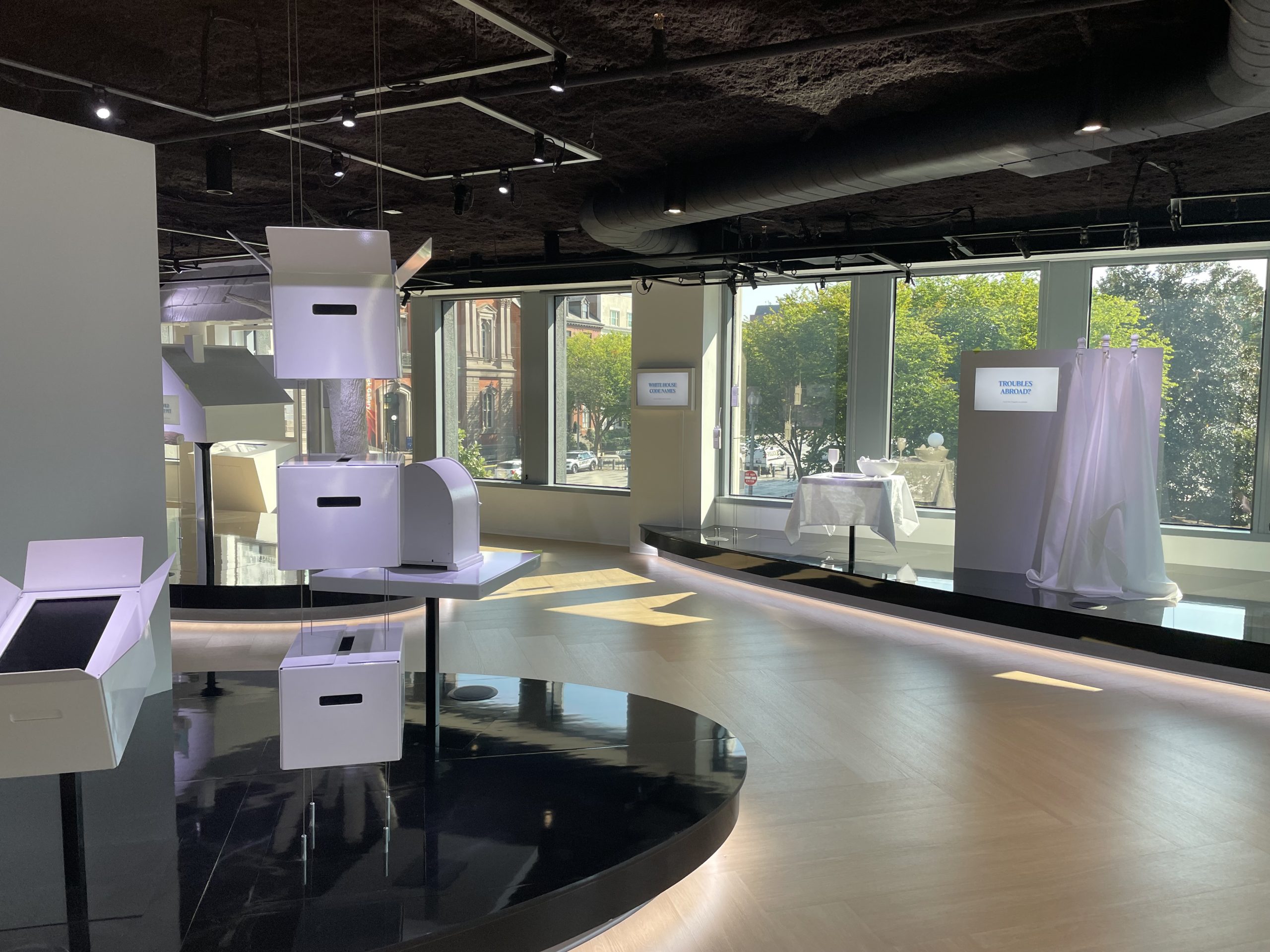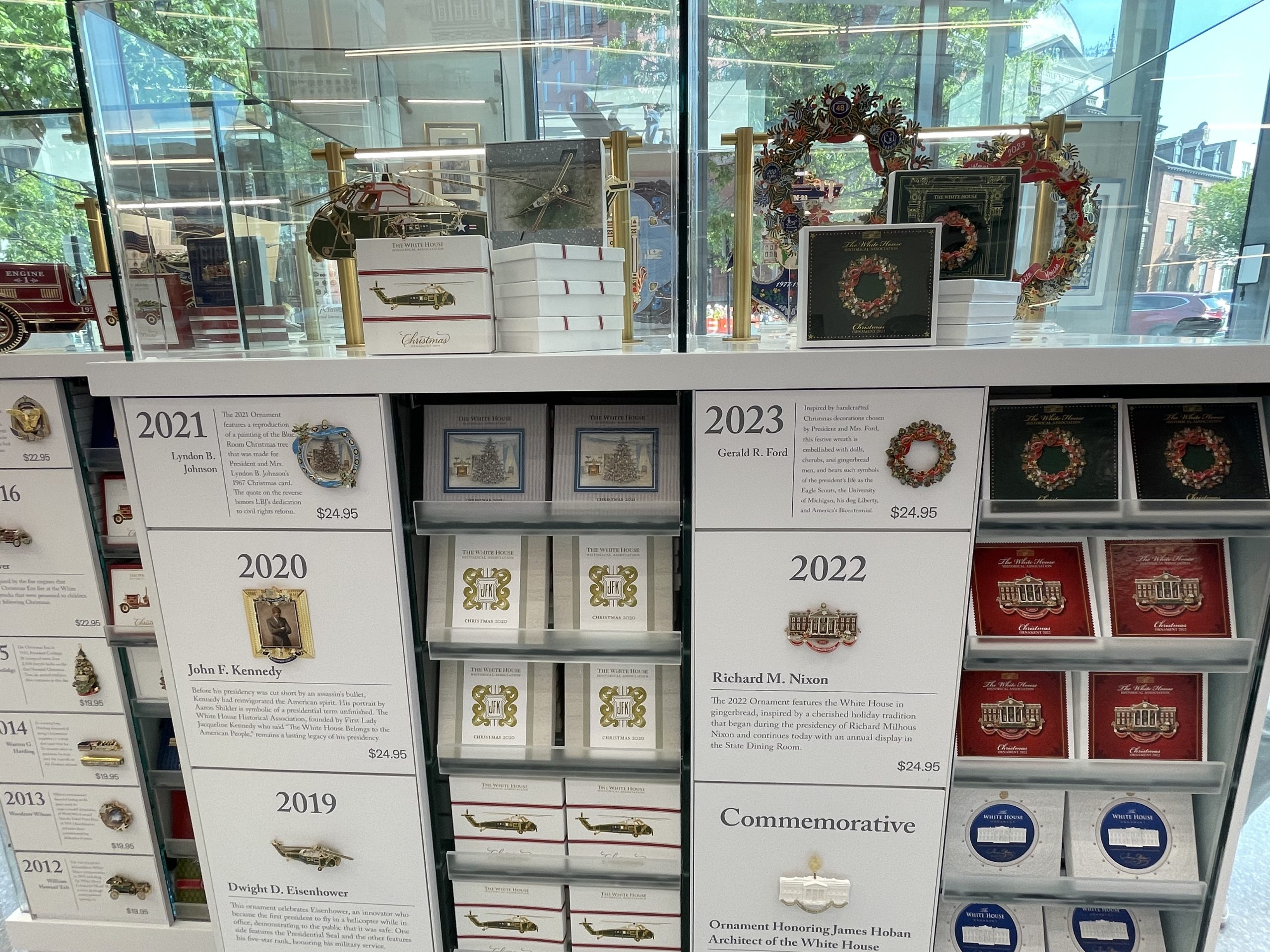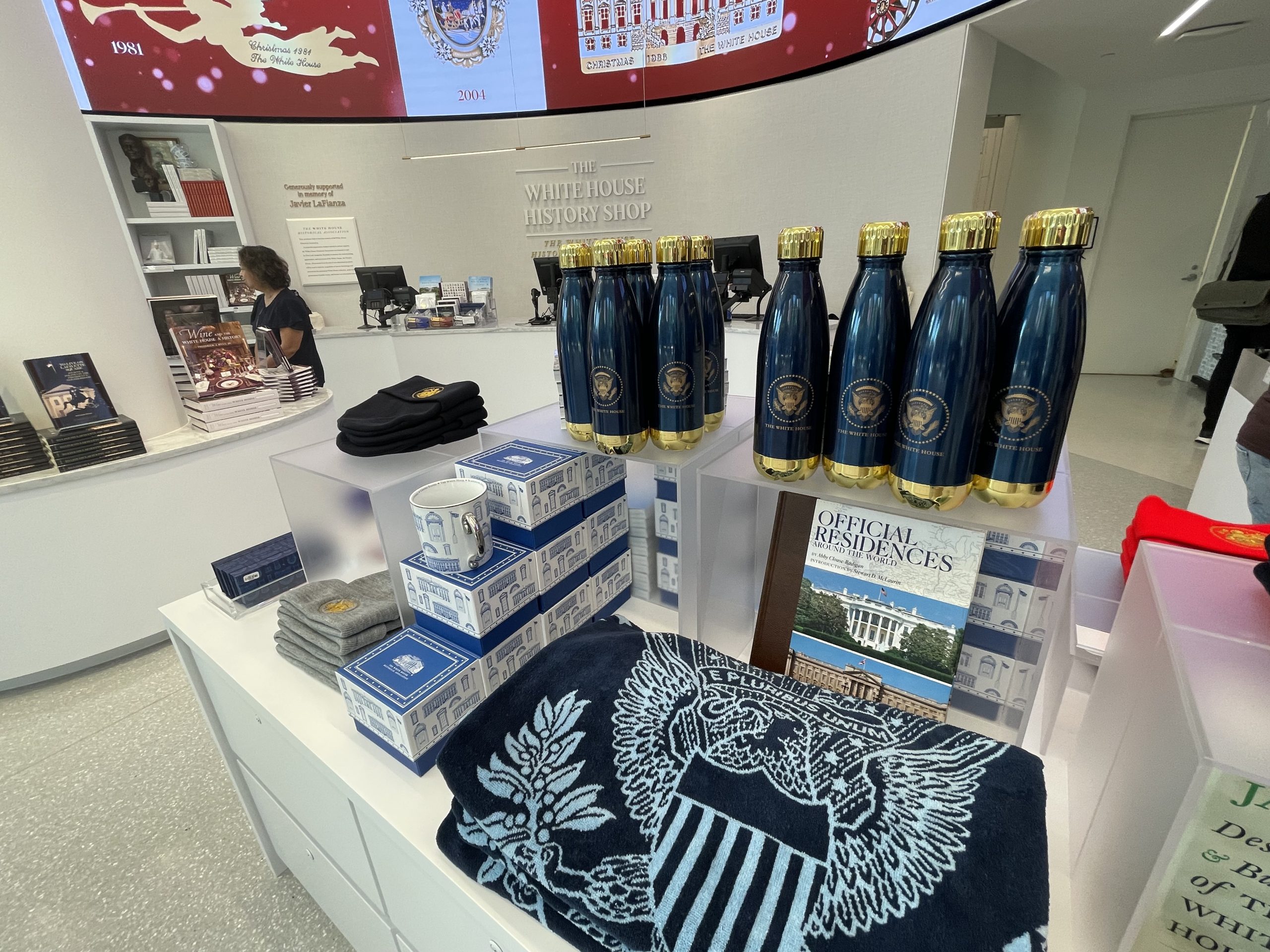What if you could tour the White House and, instead of being refused the chance to see the Oval Office, which never is allowed on tours, you could sit at the president’s Resolute desk, spinning in the (p)leather chair and opening its drawers? Or you could join high-level officials at a Cabinet meeting, chiming in your two cents about a national crisis? Or settle into a plush armchair in the family’s private theater? Well, now you can, kind of—at the newly opened A People’s House: A White House Experience. Just 150 yards from the actual White House, this 33,000-square-foot, cutting-edge, permanent museum provides an immersive journey through some of the White House’s most iconic rooms—full-scale replicas!—blending fascinating history and stories about the people who have lived there and worked there with advanced technology, interactive exhibits, and immersive media.
This destination is the brainchild of the White House Historical Association, which, in partnership with Panasonic Corporation, “conceptualized, planned, funded, built, and opened the entire space in a mere 20 months!” said Stewart McLaurin, president of the White House Historical Association on a recent media tour. The museum will evolve with each administration, ensuring a dynamic destination for visitors of all ages to explore the White House past and present.
Come along and take a look at this riveting new museum.
INTRODUCTION
Walking through the front doors, you enter the lobby, with the well-stocked flagship giftshop straight ahead and, to the left, the security screener. The names of presidents and their wives fill a wall—the lucky few who have had the opportunity to call the White House home, starting with John Adams and his wife, Abigail, who moved in on November 1, 1800.
On the other side of security awaits the first gallery—where a 1:5 scape replica of the White House ‘s south façade comes to life, and you get your first sense of what you’re in for. Cinematic lighting, immersive audio narration, and embedded video monitors provide a dazzling overview of the Executive Mansion’s rich history from 1790 to today—for example, lifelike flames dance through the windows to represent the British burning of the White House during the War of 1812. The orientation film is narrated by Martin Sheen (West Wing’s President Bartlet), plus there’s a welcome video by First Lady Jill Biden (which, of course, will be changed with each new administration).
DIORAMA
On the other side of the south façade, you’ll see how the White House rooms are laid out across three floors in a larger-than-life, doll-house-like diorama that spans an entire wall, complete with mini furniture, paintings, rugs, and lighting. You get a chance to peer into not only the public rooms, but also the private living quarters on the third floor. Tablets activate videos, music, and other media, delving into White House stories—such as Rutherford B. Hayes’ swearing-in, which took place in the Red Room in 1876.
THE IMMERSIVE THEATER
And now, this is cool. You enter a room that, every five minutes, using the most up-to-the-minute immersive technology, transforms into one of the White House’s public rooms—including the East Room, Green Room, Blue Room, and Red Room. As each new room falls into place, digital images of paintings and furniture grace the walls, even a carpet unfurls beneath your feet, as a narrator relays the story of each space. Hover your finger over white buttons projected beneath each item, and up pops additional images and information that delve deeper into the story of each piece.
For example, in the Green Room, hover your finger over the bust of Benjamin Franklin sitting on the fireplace, and a window pops up explaining sculptor Jean Antoine Houdon created the statue in circa 1810 in Sèvres.
THE WEST COLONNADE & ROSE GARDEN
As we’ve all seen from TV news, the president often reaches the Oval Office along the West Colonnade, lovingly termed the “45-second commute.” The museum features a replica of this famed walkway—the ideal spot to take a selfie. Along the way, you pass a representation of the East, West, and Rose Gardens, which, I have to say, isn’t quite as impressive as it sounds. Blooming saucer magnolias (or are they cherry blossoms? It’s hard to tell) are painted onto windows, which don’t come close to a garden experience. That said, interpretive signs remind of the historic importance of these outdoor spaces (including Turkey Pardons before Thanksgiving!).
THE OVAL OFFICE
At the end of the colonnade, you come to the star of the visit—the world’s most famous office. This is the president’s formal working space, where presidents have met with key advisors and made decisions that have defined the nation since President William Howard Taft added the first Oval Office in 1909 in the newly built West Wing; FDR in 1934 moved the office to its present location and expanded it.
The room you step into is an exact replica of the real Oval Office, re-created down to the smallest detail. Every statue, painting, and artwork has been faithfully reproduced to match the décor of the current president. Right now, reflecting Joe Biden’s office, it features the Resolute desk, along with a moon rock, busts of JFK and César Chavez, Franklin D. Roosevelt’s portrait above the fireplace, even a re-creation of the weathered family Bible from his swearing-in, replicating every single page. A technology column in the center of the room shows how the office has looked under different administrations.
But here’s the best part. Unlike the real Oval Office (which most people can’t even see), you can make yourself at home in this one! Take a seat at the president’s desk, settle into the armchairs in front of the fireplace, and immerse yourself in the room where the country’s most pivotal decisions are made. Perhaps, if you open the drawers, you’ll find copies of best-wishes letters that outgoing presidents have traditionally left their successors.
“Martin Sheen was in here yesterday twirling around in the chair,” McLaurin said.
Of course, don’t get too comfortable. The décor will all be changed to reflect the new president’s taste, come January 2025.
SECOND FLOOR
A stairwell graced by historic White House photos leads you to the second floor, where you’ll find the …
…People’s Voices Gallery
The people who make the Executive Mansion possible—chefs, gardeners, security guards, florists, electricians, etc.—work behind the scenes from one administration to the next, no matter their party affiliation. In this gallery, they are honored by digital portraits that spring to life, introducing you to committed employees, including Dale Haney, who been part of the grounds maintenance crew since 1972. “He was on the lawn when Ford walked Nixon to the helicopter,” McLaurin said.
Also in this room, you can place a “book” on a library-like table that populates a screen with a digital version. Flip the pages and explore in-depth each of the topics: Food in the White House, Technology at the White House, Managing the White House, and more.
Finally, two more portraits in this room are digital portals to learn more about the presidents and First Ladies.
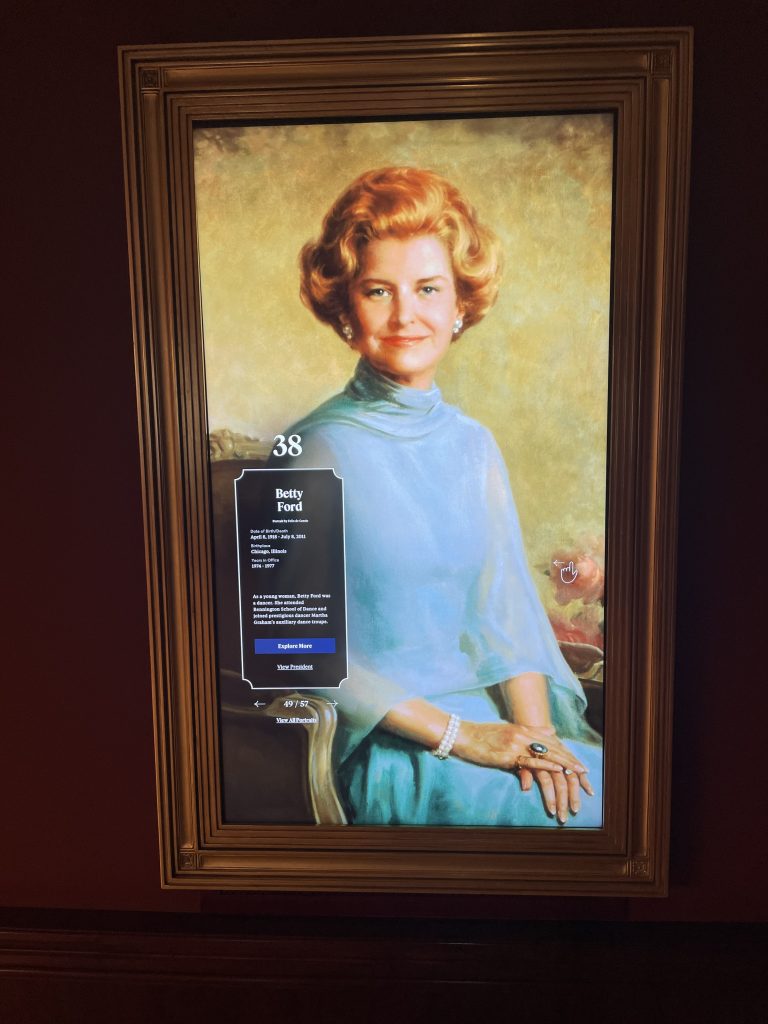
The White House in Action: Cabinet Room
More fun awaits just down the hall. Step into the Cabinet Room, where you can sit at a long table and engage in conversation with three different presidents as they work their way through intense crisis situations: Abraham Lincoln and the attack on Fort Sumter; FDR and the Great Depression; and JFK and the Cuban Missile Crisis. After you hear the hologram president discuss the crisis with his hologram senior advisers, all of whom sit across from you, you can vote on how you would resolve the situation. You then get to see how fellow visitors have voted; the results are analyzed; and you also get to hear what really happened.
The White House in Action: State Dinner
Next, crash a state dinner in full swing in the State Dining Room. You are invited to sit at a crystal-laden table, joining life-like video images of athletes, stars, and politicians who discuss issues of the day. And then, you hear “Hail to the Chief,” and everyone jumps to their feet as the president and First Lady arrive to a rousing ovation.
The White House in Action: Family Theater
Finally, the last gallery replicates the family movie theater, down to the red-plush armchairs that entice you to sit and stay awhile. In the White House, presidential families can watch up-to-the-minute blockbusters as well as family movies. Here, you have the chance to answer trivia questions about the presidents.
Stories in Objects
The very last space is a large room filled with 32 shiny white, life-size objects: a wedding cake, a Depression-era radio, an Easter-egg-filled basket, a bird house and other items that represent life in the White House throughout history. Each one includes video footage that takes a deeper look at what each item represents—weddings that have taken place in the White House, FDR’s fireside chats, the popular Easter egg roll, even the story about the raccoon that was given to President Coolidge for 1926 Thanksgiving dinner, which the kids kept as a pet instead. The things you learn here are fascinating!
EXIT
Educational events and activities are hosted on the third floor for school and other groups. If you aren’t involved in that, exit down the stairs to the 1,500-square-foot gift shop. Among the items for sale: every single White House Christmas tree collectible ornament, including the current year’s; water bottles and towels with presidential seals; and books on every topic you can think of related to the White House and the inhabitants who have lived and worked there.
And while it’s an ingenious way to learn about presidential history, there’s a deeper hope: “This experience will also remind visitors of their civic responsibility to engage and learn about the presidential process, to be better citizens,” said McLaurin.
Visitor Information
The People’s House, 1700 Pennsylvania Ave., NW, Washington, DC. Entry is free, but you’ll need to reserve timed tickets in advance of your visit here.
Side Dishes
If you want a hotel with a historic, presidential feel, consider the wedding-cake-like Hay-Adams, built on the site of the former homes of John Hay, Abraham Lincoln’s personal secretary and later Secretary of State, and Henry Adams, a descendent of Presidents John Adams and John Quincy Adams; the Willard, which has hosted numerous presidents since the 19th century and is famously associated with President Ulysses S. Grant, who allegedly coined the term “lobbyist” there due to the many people angling to speak with him in the hotel lobby; or the boutique Jefferson Hotel, whose elegant décor gives a nod to the third President.
As far as restaurants go, stop by Old Ebbitt Grill for oysters and the chance to mingle with White House staff. The rooftop bar/restaurant at the historic Hotel Washington offers views of the White House, far below.
By Barbara Noe Kennedy

